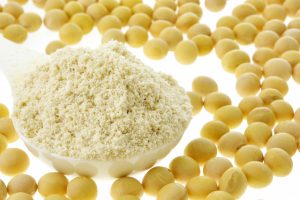「Do」ラビットフードの特徴その5
心臓をサポートすることで有名な栄養素
ウサギの心臓は他の動物と比べ、体に対して心臓の割合が小さいため、心臓にかかかる負担は大きいと考えられます。また、体が小さく、心拍数が多いため、心臓病の検出、治療、評価をするのが非常に困難です。そのため、潜在的に心疾患を抱えているウサギは非常に多いと予想されます。
タウリン
タウリンは、高用量でウサギにおいて心臓の収縮力を増強することが知られており、他にも動脈硬化や冠動脈性疾患の予防に期待されています。
L-カルニチン
L-カルニチンは細胞内のミトコンドリアに脂肪酸を受け渡す役割を担っています。ミトコンドリア内に入った脂肪酸は代謝を受け、細胞のエネルギー(ATP)を生み出すことから、脂肪を消費するという意味でダイエット目的で人のサプリメントやドックフード、キャットフードでよく使われております。また、ミトコンドリアを保護する作用もあるということも論じられている為、心臓病のサポートなどにも利用されています。その他、抗酸化作用、脂質低下作用なども言われています。
ウサギでのエビデンスは?
タウリン、L-カルニチンについては、複数論文があるものの、これらの論文は、腹腔投与や、投与量が非常に高用量であるため、同用量を採用することは不可能です。そのため、同様の効果を得るのは難しいでしょうが、毒性が少なく、以前よりラビットフードにも使われているため、期待を込めて導入することに決定しました。NOAEL(最大無毒性量)を調査し、ADI(1日許容摂取量)を独自に設定し、過剰量にならないように設計してあります。
Keiko, T., J. Azuma, N. Awata, H. Ohta, T. Hamaguchi, A. Sawamura, Y. Tanaka, S. Kishimoto, and N. Sperelakis. 1982. “Beneficial Effect of Taurine in Rabbits Chronic Congestive Heart Failure With.” 1278–84.
Gokce, G., G. Ozsarlak-Sozer, I. Oran, G. Oktay, S. Ozkal, and Z. Kerry. 2011. “Taurine Suppresses Oxidative Stress-Potentiated Expression of Lectin-like Oxidized Low-Density Lipoprotein Receptor and Restenosis in Balloon-Injured Rabbit Iliac Artery.” Clinical and Experimental Pharmacology and Physiology 38(12):811–18.
Balkan, Jale, Öznur Kanbağli, Aydan Hatipöğlu, Mutlu KüÇük, Uğur Qevikbaş, GulÇin AykaÇ-Töker, and Müjdat Uysal. 2002. “Improving Effect of Dietary Taurine Supplementation on the Oxidative Stress and Lipid Levels in the Plasma, Liver and Aorta of Rabbits Fed on a High-Cholesterol Diet.” Bioscience, Biotechnology and Biochemistry 66(8):1755–58.
Murakami, Shigeru, Yukiko Kondo, Takanobu Sakurai, Hideaki Kitajima, and Takatoshi Nagate. 2002. “Taurine Suppresses Development of Atherosclerosis in Watanabe Heritable Hyperlipidemic (WHHL) Rabbits.” Atherosclerosis 163(1):79–87.
Seccombe, David W., Leighton James, Peter Hahn, and Edward Jones. 1987. “L-Carnitine Treatment in the Hyperlipidemic Rabbit.” Metabolism 36(12):1192–96.
Sayed-Ahmed, Mohamed M., Mahmoud M. Khattab, Mohamed Z. Gad, and Nadia Mostafa. 2001. “L-Carnitine Prevents the Progression of Atherosclerotic Lesions in Hypercholesterolaemic Rabbits.” Pharmacological Research 44(3):235–42.
Moghaddas, Azadeh and Simin Dashti-Khavidaki. 2015. “Potential Protective Effects of L-Carnitine against Neuromuscular Ischemia-Reperfusion Injury: From Experimental Data to Potential Clinical Applications.” Clinical Nutrition 1–8.
George, Safaa M., Heba A. Yassa, Hassan A. Hussein, and Abeer M. El Refaiy. 2017. “Effect of Carnitine Formaldehyde-Induced Kidney , Liver and Testicular Damage in Rabbits , A Histopathological Study.” 25(2):13–24.
Diaz, Maritza, Flor Lopez, Frank Hernandez, and Julio A. Urbina. 2000. “L-Carnitine Effects on Chemical Composition of Plasma Lipoproteins of Rabbits Fed with Normal and High Cholesterol Diets.” Lipids 35(6):627–32.
Bell, F. P., T. J. Vidmar, and T. L. Raymond. 1991. “L-Carnitine Administration and Withdrawal Affect Plasma and Hepatic Carnitine Concentrations, Plasma Lipid and Lipoprotein Composition, and in Vitro Hepatic Lipogenesis from Labeled Mevalonate and Oleate in Normal Rabbits.” American Institute of Nutrition. 959–66.
Bahrami-Bukani, Mehran, Leila Zarei, Ata Abbasi, Negin Farhad, Hawdam Rostami, and Ali Mehrshad. 2019. “Evaluation of L-Carnitine in an Animal Model of Cholesterolinduced Atherosclerosis.” Tropical Journal of Pharmaceutical Research 18(8):1661–66.
















